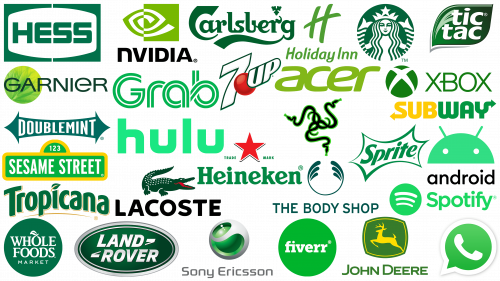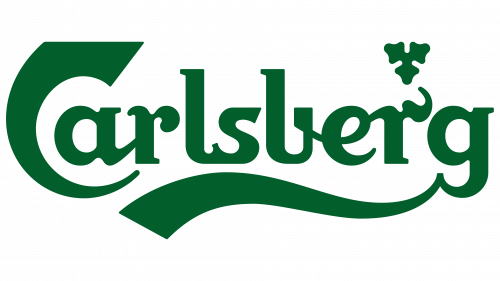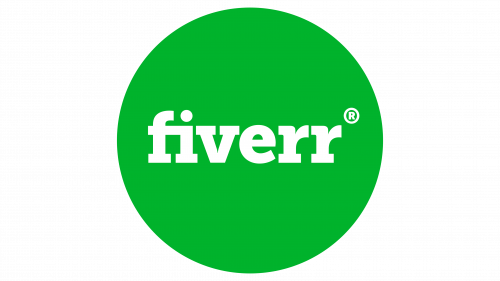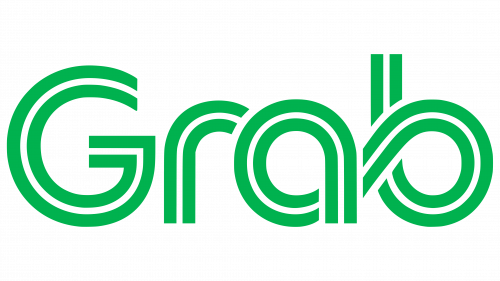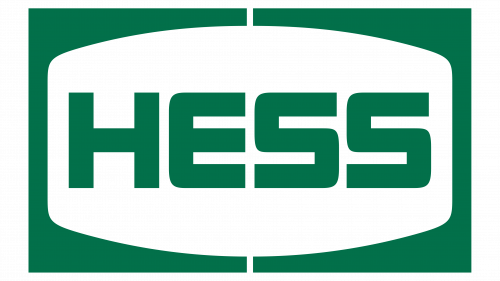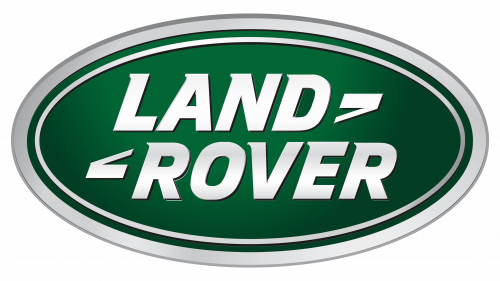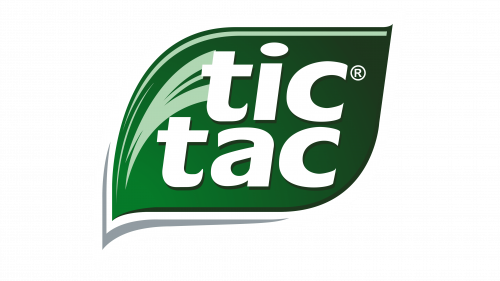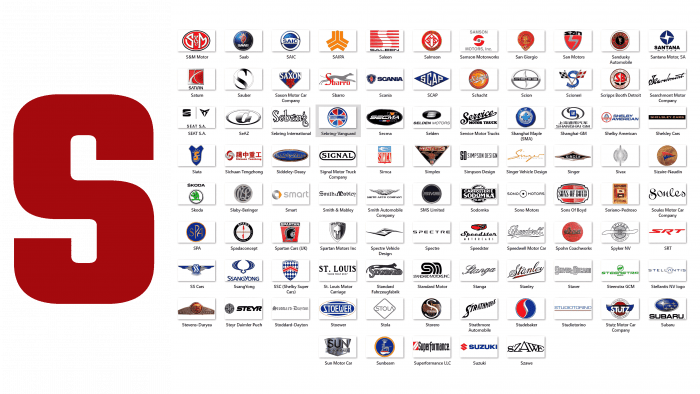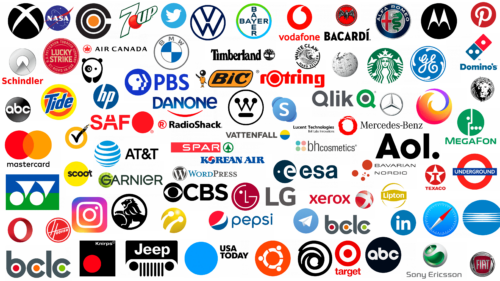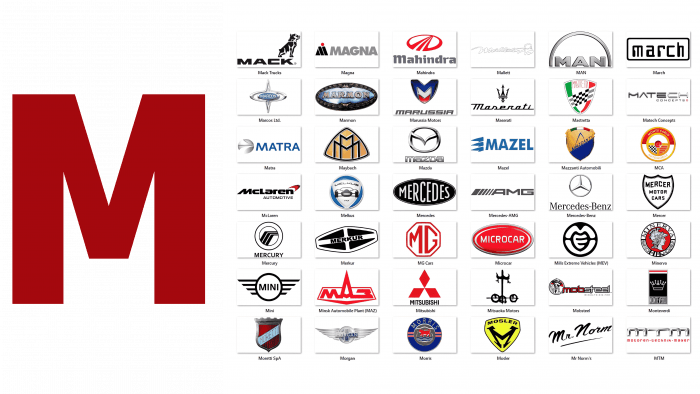Emerald emblems are recognizable around the world and are associated with good fortune, nature, and a sense of security. Companies using this hue in their branding often seek to emphasize their commitment to environmental sustainability or to capitalize on its inherent ability to motivate and inspire.
Green is one of the most common colors across cultures, often evoking the vibrant foliage of forests and the verdant fields of nature. Its hues are calming due to its shorter wavelength and are generally perceived as less intrusive and more soothing.
Empirical studies show that under favorable conditions, green can stimulate creativity, relieve stress, and even promote ambition. The color is commonly associated with positive attitudes, joy, and notions of good fortune, which is linked to cultural symbols such as the four-leaf clover and St. Patrick’s Day traditions.
Some of the most recognizable green emblems from around the globe will be examined. This will provide a deeper understanding of the impact this hue has on branding and consumer psychology.
Why do companies use green in their logos?
The shade of green has taken its place as the most preferred color in many industries. Comparable in popularity to the color blue, green radiates a sense of calm, tranquility, and peace. It resonates with a wide variety of populations, transcending age and cultural differences.
In the field of color psychology, the connotations associated with the color green are multifaceted. Depending on the shade chosen and the context in which it is used, it can evoke a variety of feelings, from creativity and positivity to motivation and zeal. The predominance of green in logos often indicates a brand’s desire to connect with natural elements or emphasize its environmental stance.
Emerald insignia is particularly common in industries such as culinary and cosmetics, emphasizing a focus on organic and natural ingredients. It should be noted that, like any other color, green can be interpreted depending on context. Some shades of green can evoke feelings of health and vitality, while others can hint at negative feelings such as envy or stinginess.
Green has historically been associated with finance and currency, and this symbol can be perceived both positively and less favorably.
An in-depth analysis of brands with green logos provides a full picture of how this color can enhance a company’s image and infuse it with additional meaning and nuance.
What companies have a green logo?
The range of green hues – from vibrant hues that evoke vitality to deep hues that reflect nature’s tranquility and luxury – allows green logos to be used across all industries. While some areas, such as healthcare, beauty, and gastronomy, are particularly drawn to this hue, it is by no means exclusive to these fields.
Various industries recognize the potential and flexibility of green in branding. Whether it’s to symbolize a connection to the natural environment, a sense of tranquility, or even growth and prosperity, the use of this color is seen everywhere. From the technology sector to fashion, from financial institutions to the entertainment industry, green logos can be found throughout the corporate world.
Understanding the depth and breadth of green’s influence can shed light on its continued relevance in visual branding strategies across market sectors.
7UP
The versatility of the color green gives brands the opportunity to create their own narratives. While Sprite leans toward an energetic green, 7UP opts for a deeper shade, presenting audiences with a unique flavor profile. The richer green color suggests a richer and more mature flavor palette, distinct from the tart citrus notes.
In the 7UP logo, a bold red bubble emphasizes the “Up” segment, introducing an element of dynamism and modernity. This bold contrast reinforces the modern feel of the brand and gives it a refreshing character.
The choice of a more muted green color takes the imagination beyond the usual citrus hues. On the contrary, it beckons the imagination to explore a wide range of natural flavors and sensations. The choice of color and design elements work in harmony to ensure the 7UP stands out on its own, conveying the refreshing yet nuanced taste of a beverage.
Acer
Often synonymous with vitality and progress, green has become a popular color among forward-thinking brands looking to demonstrate their commitment to creativity and development. When used in corporate symbols, this shade can evoke feelings of reliability and trust. Such feelings are not only inherent in the color green: blue also has a reputation for reliability and trustworthiness.
If you look closely at the famous technology company Acer, you will notice that its logo uses a bright and vibrant shade of green. This choice is not only due to aesthetic considerations; it expresses innovation, progress, and originality of thinking. This shade can resonate with an audience that appreciates fresh ideas and original solutions.
Acer’s path to this shade was evolutionary rather than instantaneous. Historical branding choices show that over the course of its existence, the company has moved from one hue to another. This evolution indicates a period of reflection and experimentation, suggesting that the company was not in a hurry to make decisions. It meticulously evaluated numerous shades until it concluded that the refreshing lime green color most closely reflects its corporate ethics and aspirations. This final choice underscores Acer’s commitment to aligning its visual identity with its core values and mission.
Android
In the technology realm, Android stands out with a distinctive green hue that contrasts with the more muted tones used by other technology brands. This vibrant hue emphasizes Android’s modernity and presents the brand as a beacon of positivity and innovation.
This shade of green is often associated with concepts such as determination and drive. This choice seems intentional and in line with the platform’s innovative spirit and commitment to excellence. The decision to choose a lighter shade of green for the Android emblem has significant implications. While richer shades can create an air of elegance and formality, lighter options, as in the case of Android, often evoke feelings of warmth, accessibility, and openness. This shows that the brand is all about technological prowess, user-centeredness, and community engagement.
Carlsberg
Carlsberg stands out prominently among the well-known beer brands with its distinctive green logo. The decision to include the color green in the logo is not accidental. Green is often associated with ideas of freshness and purity, which speaks to the brand’s commitment to using clean ingredients in beer production.
Choosing green has another advantage: it is instantly recognizable. In a crowded beer market, having a logo that stands out and is easy to remember can be key to customer loyalty.
The inclusion of the clover in the logo makes Carlsberg stand out even more. It gives the design an element of uniqueness and evokes feelings of good luck and prosperity, which are often associated with the clover symbol. With this combination of colors and design elements, Carlsberg successfully conveys a message of quality, tradition, and reliability to its consumers.
Double Mint
The strategic use of color in corporate identity can have a significant impact on consumer perception of a brand. As an example, Wrigley’s “Double Mint” chewing gum uses a dark mint green hue in its logo. The successfully chosen shade evokes a feeling of freshness and vivacity, organically combining with the product it represents.
The logo design is simple yet extremely effective. The use of a richer green color is a tactical decision, as it contrasts with lighter shades that can evoke different sensations, such as the tang characteristic of citrus. The darker green color is more reminiscent of fresh mint, creating a mental connection between the brand’s visual elements and its sensory experience.
White typography enhances the effect and complements the green background. The contrasting white letters are visually appealing and emphasize the freshness the brand aims to convey. The strategic use of color contrast further draws attention, reinforcing the brand’s promise to deliver freshness. Together, these design decisions contribute to a compelling visual identity that conveys the brand’s core characteristics.
Fiverr
Green, with its inherent notes of innovation and evolution, is a favorite hue for modern companies and start-ups looking to introduce new services or products. The Fiverr logo illustrates how the use of the color green can resonate and inspire the target audience.
The prominent green circle in the Fiverr logo subtly conveys the concepts of unity, adaptability, and global reach. Such qualities are essential for a platform designed to connect freelancers and potential employers from around the world. The platform’s choice of a robust serif font gives it an aura of relevance and sophistication.
By leveraging the vibrancy and versatility of the color green, Fiverr effectively embodies its mission: to create a vast, dynamic marketplace where talent meets opportunity, and innovation thrives. This strategic color choice not only makes the brand memorable but also reinforces its position as a pioneer in the freelance industry.
Garnier
Garnier, a well-known beauty products manufacturer, uses green in its logo design to emphasize its focus on natural and quality ingredients. Going beyond the use of the green hue, the brand has incorporated leaf graphics in the logo layout to emphasize its focus on organic ingredients.
This conscious choice to associate the brand with nature resonates with consumers who prioritize organic and natural products in their personal care. The leaf image serves a dual function: it adorns the logo and acts as a silent but eloquent protector of the brand’s core values.
Green in corporate branding is often associated with environmental care and health benefits, but Garnier takes it a step further. The leaf element incorporated into the logo serves as a visual statement, reassuring customers of the true natural quality of the company’s products. The entire logo composition is a strategic move to align the brand with the values of sustainability, natural ingredients, and consumer well-being.
The Garnier logo is a testament to the power of intelligent design to convey a multifaceted message, serving not only as a brand identifier but also as a subtle statement of the company’s ethical principles and commitments.
Grab
Grab, a company operating in Southeast Asia, effectively utilized a vibrant shade of green in its logo, allowing it to stand out in the digital space. The wordmark design subtly echoes the essence of roads and paths, bringing to mind thoughts of travel and mobility. And the sans-serif font gives the entire branding a modern and accessible feel.
By choosing green for the branding, Grab has moved away from the traditional black and gray colors that are often used to represent asphalt and highways. This color choice differentiates the brand from its competitors and positions it as progressive, avant-garde, and creative.
The green hue in the logo doesn’t just serve as a color. It represents Grab’s vision of changing traditional modes of transportation by offering fresh, innovative solutions geared toward the modern user. This strategic use of color reinforces the brand’s image, highlighting its commitment to offering services and driving change and innovation in transportation.
Heineken
In the beverage industry, some brand logos become instantly recognizable, and Heineken is certainly one of them. The Heineken emblem, which is a harmonious blend of bright green with contrasting red and white elements, has made a significant impact on beer lovers around the world.
The intentional choice of a lighter shade of green not only gives the logo a fresh and appealing aesthetic but also contributes to an image of warmth and accessibility. This is especially important for a brand operating in the alcoholic beverage sector, where contact with the consumer is very important.
The green color in the Heineken logo also evokes a sense of freshness and purity, subtly hinting that every sip of beer makes you feel refreshed and rejuvenated. On the other hand, the combination of red and white provides balance and promotes brand memorability, ensuring that Heineken remains a focal point for beer lovers and drinkers alike.
Hess
Green is often associated with vitality, renewal, and vigor, and it subtly conveys the concepts of rejuvenation and sustainability. Hess Corporation took advantage of this psychology by choosing a rich and bold green color in its branding. This conscious choice sets the company apart and is associated with environmental responsibility and reliability.
The shade of green chosen for the Hess logo gravitates more towards a mature and understated palette, contrasting with flashy or fluorescent options. This choice gives the brand’s identity depth, authenticity, and sophistication. Complementing this visual identity is the use of strict sans-serif fonts. These letters emphasize durability, reliability, and steadfastness with their inherent boldness.
The synergy of a carefully chosen shade of green combined with vibrant typography creates a compelling visual story for Hess Corporation. This story goes beyond mere representation; it carries the message of resilience, environmental awareness, and forward thinking. Through this careful selection of brands, Hess Corporation communicates its ethics to its stakeholders, ensuring its position as a frontrunner in the energy sector.
Holiday Inn
In the hospitality industry, the Holiday Inn emblem is a distinctive mark that testifies to the brand’s enduring heritage. This green logo provides a glimpse into the various visual strategies employed by businesses in the hospitality sector.
While many hotel emblems use classic fonts and traditional hues such as blue and black to emphasize their reliability and timelessness, Holiday Inn chose a different path. By using the color green, the emblem creates an identity that is different from its competitors.
The green gradient of the logo evokes images of undulating meadows and verdant fields. This palette not only denotes aesthetics but also brings to mind thoughts of traveling and new experiences. By using this hue, the logo subtly conveys the brand’s commitment to being not just a stopover destination but a launching pad for unforgettable adventures and explorations. The color choice is more than just visual appeal; it’s a strategic move designed to reflect the brand’s commitment to creating unique experiences in the world of hospitality.
Hulu
In the vast digital space, where streaming platforms compete fiercely for attention, color is becoming a critical factor in building brand identity. Hulu, one of the leading streaming services, uses a vibrant shade of green in its logo, giving it a unique position among competitors like Netflix with its red theme and Amazon Prime with its blue.
Hulu’s choice of green is not just a desire to differentiate itself from others but has a deeper meaning. This hue is bright, immediately eye-catching, and synonymous with renewal, progress, and forward-looking ideas. In the fast-changing world of entertainment, this color signifies Hulu’s commitment to innovative content and a new approach to digital broadcasting.
The practicality of this shade is evident when visualizing the smart TV interface. Amidst a sea of icons, Hulu’s luminous green logo is designed to be instantly eye-catching, remaining visible even amidst a plethora of other apps. This strategy underscores the brand’s commitment to being recognizable through its vast library of content and its identity in a crowded marketplace.
John Deere
In the vast realm of corporate branding, colors play a key role in conveying a company’s identity and ethos. The John Deere logo, which harmoniously combines green and yellow, is no exception. This symbolic design echoes the vibrant hues of nature and creates a deep connection, especially since the company specializes in manufacturing machinery for agriculture, forestry, and construction.
Green, universally revered as a hue of life, growth, and rejuvenation, blends seamlessly with John Deere’s agricultural background. It subtly echoes environmental sustainability, hinting at solutions and technology that are in harmony with environmental stewardship. This color choice resonates with those who value the environment and natural balance.
Yellow radiates warmth, optimism, and vigor like the first rays of dawn. In the context of technology and construction, this color creates an aura of reliability, durability, and self-confidence. The implication is that technology is as constant and durable as the daily sunrise.
These shades inspire structures that are not only technologically advanced but also ecologically harmonious. It’s about making sure that pioneering innovations blend in with the natural environment, not overshadow it.
The John Deere logo, with its unique color palette, effectively conveys the company’s commitment to innovation, sustainability, and progress. It paints a picture of a future where technological progress and nature coexist, complementing and elevating each other.
Lacoste
Lacoste stands out in the apparel and sporting goods market with its iconic green logo. The chosen shade of green takes its cue from the brand’s emblematic mascot, the crocodile. This choice is deeply connected to the history of the brand and its founder.
The man behind the brand, René Lacoste, was often referred to as the “tennis alligator” for his tenacity on the court. Inspired by this nickname, he seamlessly incorporated this concept into his brand identity, creating a lasting impression in the minds of consumers.
The striking alligator image in the Lacoste logo not only reflects the founder’s legacy but also gives the brand a distinctive and memorable look. In a competitive industry, having such a unique visual identity sets Lacoste apart. The green emblem, symbolizing vigor and dynamism, is an enduring testament to the brand’s heritage and its commitment to excellence in fashion and sportswear.
Land Rover
Green undoubtedly holds a special place among the brand colors, often evoking thoughts of nature and the environment. For many, this hue also conjures up associations with travel, adventure, and the thrill of discovery. Land Rover’s corporate identity is a prime example of this association.
The Land Rover emblem includes a deep green hue that gives the brand’s image strength and elegance. This choice of color not only conveys the premium and reliability of the brand but also subtly hints at the thrill of off-road travel and the joy of discovering uncharted terrain. This design choice effectively conveys the brand’s commitment to creating luxurious and rugged vehicles that are ideal for the adventurous.
Nvidia
Recognized and revered by technology and gaming enthusiasts, Nvidia’s emblem exudes a spirit of innovation and exploration. Its logo, in a vibrant green color and a leader in graphics technology, immediately attracts attention.
The choice of green is not accidental: it represents rejuvenation and enlightenment, qualities consistent with a brand that pushes the boundaries of what is possible in the technological realm. The overall design of the logo emphasizes Nvidia’s position as a leading-edge company in the technology industry.
The logo is about more than just aesthetics. The bright green hue subtly conveys the company’s commitment to ingenuity and constant technological advancement. With the logo, Nvidia creates a clear brand identity that supports innovation while remaining accessible and understandable to a wide range of users.
Razer
In branding, the strategic use of color can speak volumes, effectively conveying vitality, innovation, and power. The Razer brand is a prime example. The neon green hue of its logo is very similar to that of the Xbox logo, making both companies leaders in their respective industries.
The intertwining design of the Razer emblem combined with the vibrant green hue further emphasizes the brand’s boldness, self-confidence, and adventurousness. It’s not just an aesthetic choice but a thoughtful move that sets the company apart in a competitive market where both form and function are valued.
The Razer brand has gone a step further by utilizing a modern typographic approach in its wordmark, which speaks to its commitment to staying relevant and innovative. The well-crafted combination of color and typography is a visual synopsis of what the company represents: a fearless technology pioneer who is not afraid to push boundaries.
The Razer brand effectively communicates its core attributes – innovation, boldness, and technology – through thoughtful color choices, sophisticated design elements, and carefully chosen word marks.
Sesame Street
The color green, often associated with growth and renewal, plays an important role in logos, seeking to evoke warmth, vitality, and positivity. The Sesame Street logo is a testament to this. The emblem, rendered in vibrant green, serves as a beacon of learning, wonder, and playful exploration – essential principles of a program designed to shape young minds.
The choice of this hue, accentuated by the golden yellow periphery, effectively conveys the vitality and boundless energy of childhood. It is no wonder that such a palette resonates deeply with the young and young at heart.
Colors have an innate ability to influence perception and mood. The strategic use of refreshing green, in combination with invigorating yellow, allows the logo to not only attract the attention of the target audience but also evoke feelings of happiness, enlightenment, and engagement, which is fully consistent with the educational essence of “Sesame Street.”
Sony Ericsson
The emblem of Sony Ericsson, a well-known company in the field of technology and telecommunications, stands out with its original design. The inclusion of green components gives it freshness and symbolizes the forward-looking and innovative technological advances. For a brand deeply rooted in the technology sector, such attributes are of paramount importance.
The circular and three-dimensional design of the logo brings to mind the globe. This design choice is indicative of the brand’s global presence and its mission to foster connections between continents. The logo reflects Sony Ericsson’s commitment to transcending distance and bringing people closer together through innovative solutions in an age where communication knows no borders. Every element of the emblem, from the color scheme to the shape, is consistent with the brand’s commitment to being at the forefront of technological evolution while emphasizing global unity.
Spotify
The Spotify emblem is the quintessential green logo, catching the eye at first glance. This emblem embodies liveliness and memorability, echoing the brand’s core ethos.
Spotify, an innovator in music streaming, has changed its visual identity. The current version of the logo, imbued with dynamism and zest, reflects the brand’s connection to the rhythm and dynamics of the music sphere.
The prominent green hue adorning the Spotify logo is a testament to the versatility of the color. Not only does it reflect the concepts of rejuvenation and invigoration, but it also emphasizes the brand’s desire to give life to the listening experience it offers. This choice underscores the brand’s desire to be perceived as a hub for music lovers, reflecting the liveliness inherent in melodies and harmonies. The logo’s color palette is not just a design choice but a strategic decision designed to align and communicate the brand’s mission to the music-streaming industry.
Sprite
In its various shades, the color green embodies a multitude of emotions and representations. Depending on the shade and application, it can evoke feelings of calm and harmony or be associated with energy and vitality. The Sprite logo is a prime example that demonstrates the energetic side of the green color. The emblem, made in cheerful green, easily evokes images of pungent citrus notes, especially reminiscent of lemons and limes.
The choice of this particular shade as Sprite’s emblem is not accidental. It provides an intuitive bridge between the eye of the beholder and the effervescent, tart sensation the drink promises. This energetic green tone, full of life, complements the essence of the drink – a burst of vigor, a refreshing sip that awakens the taste buds.
The vibrant green color encapsulated in the Sprite logo is eye-catching and easily conveys the brand’s core proposition: a rejuvenating beverage. The color alone reveals the story – zest, vitality, and freshness. The thoughtful color choice highlights the key role of hues in the brand narrative, reinforcing Sprite’s identity as a beverage that promises taste and vigor.
Starbucks
Among the many green emblems that have graced the world of fast food and coffee, the Starbucks icon is unrivaled in its recognizability. Creating this symbol, Terry Heckler was inspired by the sea and Norwegian motifs.
The choice of a rich green shade for the Starbucks emblem not only gives freshness but also hints at the huge number of flavorful ingredients that make up the drinks of this brand. The emblem doesn’t just represent what’s in the glass; it radiates liveliness and enthusiasm. It reflects the upbeat spirit that many people experience after consuming a Starbucks drink, which supports the brand’s promise to refresh them.
Subway
The Subway emblem effortlessly combines green and yellow colors to create an eye-catching brand image. This color combination subconsciously evokes thoughts of fresh ingredients commonly found in the company’s sandwiches, such as sweet corn, bell peppers, lettuce, and jalapenos.
The choice of a clean sans-serif font for the brand name lends a modern feel to the entire design. The arrows at both ends of the text symbolize the endless number of options and directions that can be chosen when designing dishes, fostering culinary creativity in the fast food industry.
The dynamism inherent in the arrows and color scheme blends seamlessly with the brand’s goal of positioning itself as a purveyor of healthy, personalized, and fast food. All of these elements combine to create a modern and comfortable aesthetic that successfully appeals to a broad consumer audience.
The Body Shop
The Body Shop, like Garnier, uses a shade of green in its brand identity, emphasizing its commitment to natural skincare and cosmetics. This shade is not just a design choice but a bright beacon that emphasizes the brand’s commitment to ecological balance and sustainability.
The Body Shop’s choice to go with a richer green color sets it apart from many skincare companies. This hue gives the logo a sophisticated and graceful feel. The rich green color evokes a sense of wilderness and rarity, giving the brand an intriguing and mysterious aura.
In various industries, the color green signifies growth, vitality, and care for the earth. For brands like the Body Shop, it serves as a clear signal of the brand’s ethics and values. It subtly informs consumers that the products they are purchasing are good for their skin and respectful of the planet. In a world where sustainability is paramount, this brand choice speaks volumes about the company’s priorities.
Tic Tac
With an innate association with the refreshing elements of nature, green is the color of choice for many brands seeking to convey freshness. Building on this association, many logos in the corporate sphere have utilized the rejuvenating essence of green, and the Tic Tac logo is a prime example.
Combining nuanced shades of green and pure white, the Tic Tac logo evokes the feeling of a cool breeze. This color synergy immediately echoes the crisp, refreshing sensation one gets when eating Tic Tac mints. This palette is both visually stimulating and subtly conveys the brand’s promise to provide a burst of freshness. This shows that the brand understands the power of color psychology and its application to effectively influence its target audience. With this design, Tic Tac stands out on store shelves and effectively communicates the key features of its product to consumers.
Tropicana
The Tropicana brand emblems feature the vibrant color green. The logo uses a combination of rich green shades that bring to mind green jungles and remote, unspoiled corners of the planet. The variety of green hues in the emblem gives the brand a unique, organic touch, perfectly linking the company to natural treasures.
A subtle yet impactful design nuance is the green leaf above the brand name, seamlessly replacing the dot above the “I” in the word Tropicana. This elegant element emphasizes the brand’s ethos of natural authenticity. The combination of these design elements conveys the brand’s authentic connection to nature and emphasizes its commitment to environmental awareness and purity in its product offerings.
The WhatsApp logo is recognizable by almost everyone thanks to its bright green hue. This bright shade was carefully chosen to represent optimism and cutting-edge innovation – the core values that the platform strives to embody.
The particular intensity of the green color serves a dual purpose: it not only attracts attention but also creates a feeling of happiness and lightness. This emotional signal enhances the user experience, reinforcing the idea that communication should be a source of comfort and joy. The color seems to convince the user that communicating with friends and family is an enjoyable and stress-free process when done through this app.
The green color carries the meaning of growth and expansion in a broader sense. WhatsApp aims to be not just a messaging tool but a means to expand social networks, make new connections, and strengthen existing ones. In this sense, the green logo serves as a visual metaphor for social enrichment and expansion.
Whole Foods
The color green, often associated with organic and natural elements, is a powerful visual cue in branding, especially in industries where health and ecology are at the forefront. One such emblem is the Whole Foods logo. This emblem serves as a beacon of quality and purity in the food retail industry, especially for those who prioritize natural and organic products on a daily basis.
Choosing green for the Whole Foods emblem is not just a color choice; it’s a statement. It embodies the brand’s commitment to sustainability, health, and the highest quality products. By prominently featuring this hue, the brand effectively communicates its core values and offerings to its target audience.
But it’s not just the green hue that matters in the logo design. Using a traditional serif font further emphasizes the brand image. A serif font is often associated with reliability, authority, and timelessness. By using this typeface, Whole Foods creates a sense of sophistication and assures customers of its long-standing commitment to quality and authenticity.
The Whole Foods logo seamlessly blends the brand’s commitment to natural products with an image of reliability and sophistication through careful color and typographic choices. This brilliant combination offers customers products and promises quality and reliability with every purchase.
Xbox
The bright green hue has long been an integral part of the Xbox brand and serves as a distinctive mark in the gaming console industry. Since its introduction, the bright neon green color has been a deliberate departure from the predominantly black-and-white hues prevalent in the console market. This bold color choice signaled Xbox’s desire to stand out and carve a niche for itself in the competitive arena.
Xbox underwent various image changes to keep up with current design trends. That said, the color green has remained constant, reflecting its enduring significance in the brand’s history. For many, this hue is not just a color but an emblem of gaming heritage. It evokes memories, experiences, and immersive, interactive digital adventures.
Although the design elements of the Xbox brand have changed, the color green remains a symbolic landmark. It is a beacon for seasoned gamers and newcomers alike, symbolizing innovation and immersive experiences and a reference to the historical past of the gaming universe.
Take inspiration from popular green logos
The business sphere is peppered with noteworthy green emblems in various industries. Green in logos can symbolize a variety of themes, from prosperity and forward-thinking to eco-friendly and organic, which is especially common in industries such as healthcare, wellness, cosmetics, and culinary arts.
Observing how many businesses use the color green in their logos suggests that the specific tone and context in which it is used can make a significant difference in brand perception. The versatility of green is evident in the fact that it can impart a calm and peaceful feel in softer shades, making it an attractive choice for brands looking to differentiate themselves from the ubiquitous blue.
The spectrum of green extends to bright and vibrant shades, giving brands a twist akin to yellow and orange. Such vibrant shades of green can revitalize a brand’s image, giving it an energetic and dynamic feel.
Evaluating the brands with green emblems mentioned above allows us to clearly see how this versatile shade can be used. This demonstrates the adaptability of green and helps companies determine if the color is in line with their brand ethos and vision.
